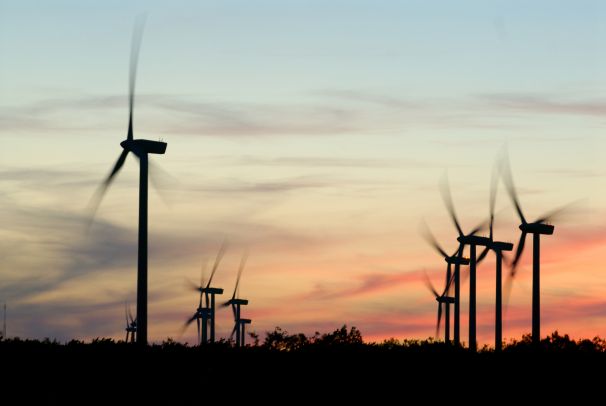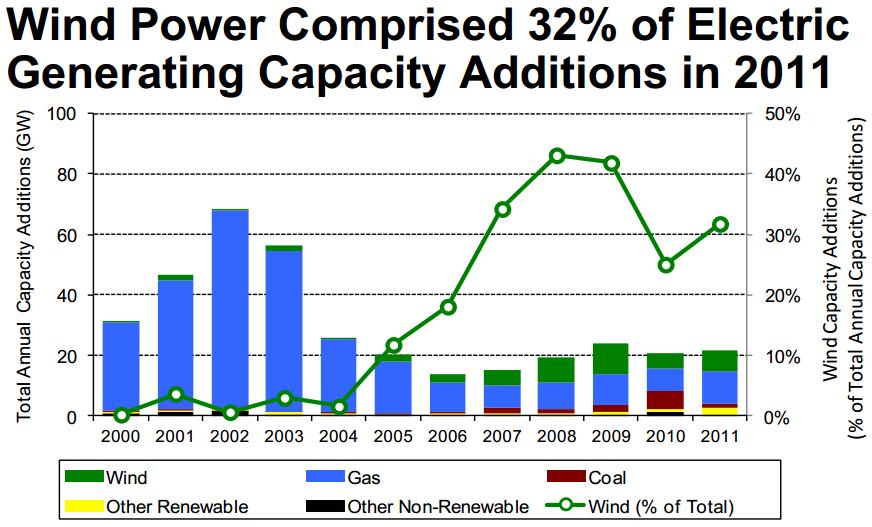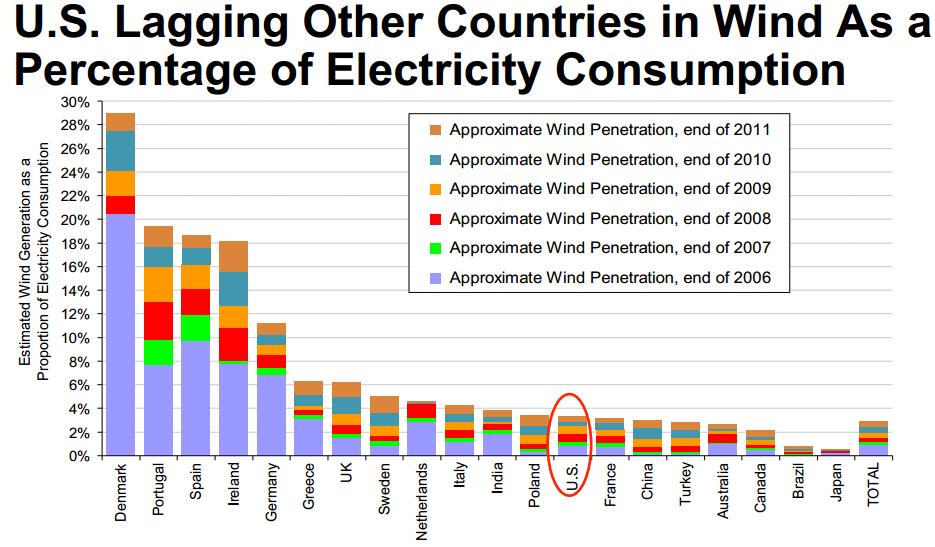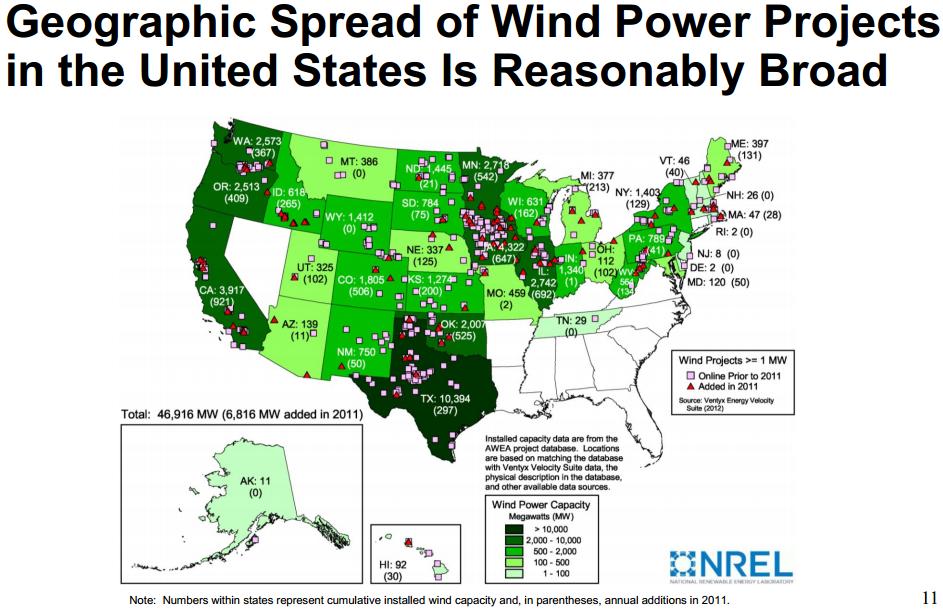 |
| AES's Buffalo Gap wind farm near Abilene, Tex. (AES) |
It’s getting harder and harder to call wind power a niche source of electricity in the United States. Last year, wind turbines represented one-third of all new generation capacity built in the country, behind only natural gas. At this point, wind provides 3 percent of the country’s electricity. In a few states, such as South Dakota, Minnesota and Iowa, wind provides more than 10 percent of all electricity.
Those stats come from a new report from the Department of Energy and Lawrence Berkeley National Laboratory looking at the state of the U.S. wind-power
market in 2011. The report argues that “Wind is a credible source of new generation in the United States,” having grown dramatically in recent years. Costs are tumbling. But, the report concludes, the industry is at risk of shrinking dramatically in 2013 as key tax credits disappear. Let’s take a look at some of their graphs:
1. New electricity capacity in the past six years has been dominated by wind and natural gas. The wind industry got a big boost from the 2005 energy bill and the 2009 stimulus. Most new electricity these days is either wind power or natural gas, with coal shriveling and solar power starting from a smaller base:
 |
2) The United States isn't a world leader in wind, but it's starting to catch up: In 2011, the United States had the second-fastest-growing wind industry in the world, behind only China. But the U.S. still gets less of its electricity from wind than a number of other countries, including India and Germany:
 |
3) Wind turbines are going up just about everywhere in the United States except for the South. Part of that's because there's more wind in places like the Great Plains. And part of it is because some states (like Texas and Iowa) have strong state mandates for wind power, while much of the Southeast does not:
 |
4) Wind power is slowly getting cheaper, but natural gas still has it beat. As the Energy Department report notes, wind turbine prices have fallen 20 to 30 percent since 2008. That's slowly helped bring down the cost of generating electricity from wind. But wind still can't quite compete with the recent flood of natural gas from shale rock, which has lowered the wholesale price of electricity dramatically:
 |
5) Right now the U.S. is on a path to get 20 percent of its electricity from wind. But that's unlikely if a number of policy supports expire this year. Congress has provided a number of incentives for wind power over the years: production tax credits, investment tax credits, the 1603 Treasury cash grant. Yet many of those policies will sunset at the end of this year. President Obama wants to extend some of them. Mitt Romney and other congressional Republicans prefer to let them expire. If these incentives aren't renewed, the report notes, then the pace of new wind installations will most likely surge in 2012 and then fall off next year. Wind power's brief, stunning surge in the United States will come to an end.


